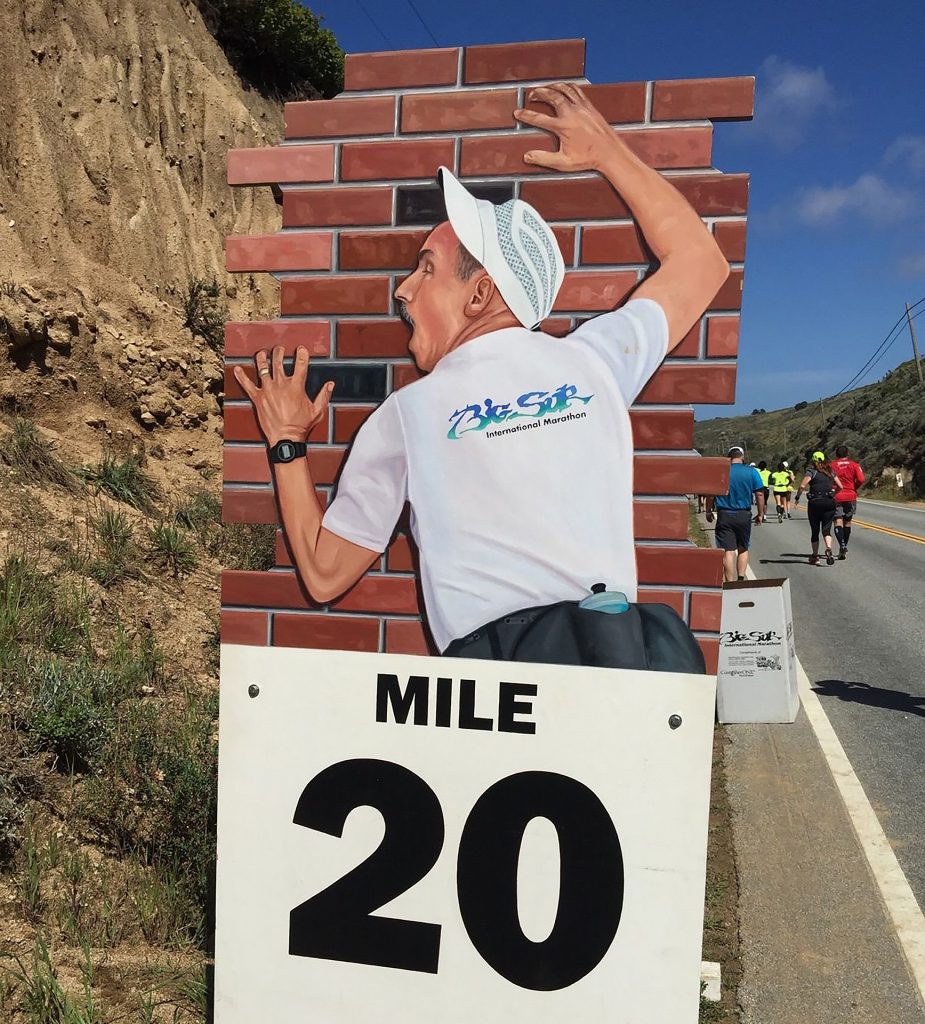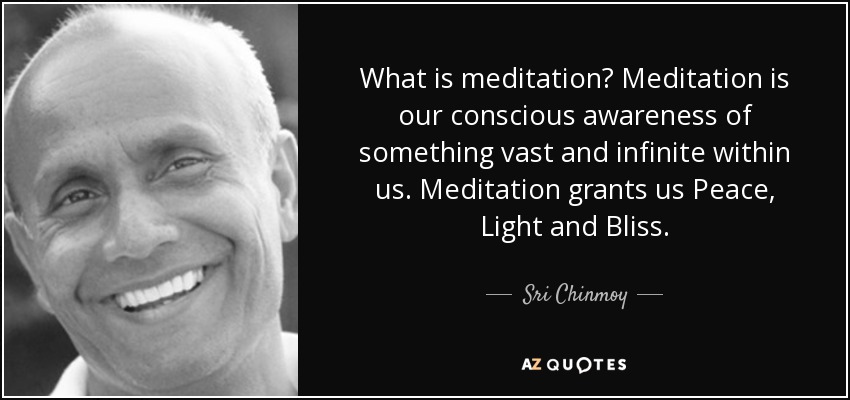Envisaging time and distances as shapes, blocks and patterns.
Running
In addition to breaking up training routes into sections and shuffling them about as already discussed in other posts, we can also benefit from the more flexible and creative part of the mind that is happy imposing patterns and shapes on what might otherwise be dry and monotonous distances and chunks of time.1
For instance, when psyching ourselves up for an upcoming hour of running, we might see it as two or three blocks of time, as opposed to sixty rigid indivisible minutes. It might be three blocks of twenty minutes or perhaps, if running at nine minute mile pace, two blocks of twenty-seven minutes (three miles each) plus an extra smaller chunk of six minutes. In our mind’s eye those first two blocks might sit next to each other, be on top of each other or be situated around parts of the clock face. They may have a certain feel to them or even a colour and geometric shape. The final six minutes might be another colour sitting on top of it all or at least it will have some kind of diffuse form in your mind.

At this pace (9 minute pace), since only three more minutes are needed to reach seven miles, you might consider the one hour chunk a seven mile block overall. If you were wanting to do 14 miles then you could think of it as a two hour run made of these two different blocks. Anything left over to be done could easily be added at the end to make it up to the correct distance. So you convince your mind that you only have to run for two hours to get 14 miles. Then at the end of the two hours you have a very small amount to pay back that you effectivley ‘stole’ during the run through yor mental fiction. The extra peace of mind that you get from thinking you can get seven miles done each hour at a more comfortable pace will far outweigh being reminded once you get to the end that there are in fact six more minutes to do.
There are myriad further ways you might divide up this hour we are considering. If aiming for six miles you might start with two miles at ten minute pace, get those out the way without too much thought, and then think up a new patterning for the remaining miles and distance – that could be visualising a 36 minute chunk of four miles at nine minute pace leaving you with an extra four minutes at the end (to use for something else or meaning you can finish early). Or else perhaps another ten minute mile (plus one second) to get down into the 20s area (of the treadmill countdown clock). After that, three sets at nine minute pace gives you six miles and three spare minutes at the end. Having four minutes spare at the end (as above) I think means you can round up to another mile and consider it a seven mile run. That doesn’t quite work with three minutes but instead, during the session, you can all the time be thinking that you will be able to complete in less than an hour. It sounds like a ridiculously small amount but anything that throws the mind off track is very beneficial. Also just switching it off a tiny bit and opening up other areas of our awareness means we are in a better position to exaggerate and reinterpret the whole session. We can also add more layers on to these small fictions which strengthens the effect. It may be a trivial amount but perhaps it’s enabling you to shake slightly the complete rigid dominion of unchangeable time. You set your mind on the fact that you have to run for an hour in order to reach six miles but you finish early and somehow have turned an hour into 57 minutes.

Of course that was based on the little fiction that six miles would be exactly an hour but as you move ahead the mind accepts these things. There is also no cheating because you do finish the distance. If you were planning on two hours of running you could finish it six minutes early which gives the mind something really hopeful to hold on to for the whole session. In our mind’s eye the session is broken down into more meaningful steps or stages rather than being a cut-and-dried distance or arbitrary impersonal stretch of time. It may make it less arduous when we work through it according to our own subjective reframing of the time and distance as opposed to feeling that it is being imposed upon us from outside.
On the treadmill the timer counts down from sixty minutes. For me I feel that each block of ten minutes has a slightly different feel from the others. When doing nine minute pace, once the clock reading is 40 something minutes (at 49.59), then I’m nearing the two mile point according to my subjective framing. From the objective perspective at 49.59 minutes I’m only just past the 1 mile point, so if I was to think of it in those terms, then I would already be feeling disheartened, especially if planning on doing a few hours. However, from the subjective point of view, now that I feel solidly in the 40s I’ve already jumped forward to the 30 something stretch in my mind and more of my mental energy is expended on thinking about the 3 mile point that is getting close. Since the stretch from the three miles point (33 minutes at 9 minute pace) to getting into the 20s (ie 29.59) is so short – only three minutes (well three minutes and one second), I can start to get my mind focused on the four mile point. When 33 minutes is showing on the countdown (the 3 mile point) I will also say to myself that I’ve now done a full half hour (I’m still thinking in terms of the currency of 1 mile as being 10 minutes) and may even be considering what I see on the timer as ‘wrong’ and as under-reading. Once into the 20s region it always feels like fairly plain sailing.
Somehow because the four mile point is ahead and occurs once one is more relaxed and warmed up, it is a vaguer less defined point and it seems to get easier at this stage to stop the mind fixating on how far it is to get there. As suggested all these points seem to have a kind of shape, character and location on an imagined clock face. It’s vaguer in the sense that I envisage it to be around 25 minutes and don’t make the exact calculation in my head (of course at nine minute pace it’s at 24 minutes with the countdown timer). The five mile point is even more vague (I’m probably subtracting a block of what feels like nine minutes from the already slightly blurred four mile point. I’m making an effort to try and keep it a little blurred too. This is a key part of much of this as of course with the calculating mind it’s a very easy calculation to make. However, you do need to focus the mind on it for just long enough to do it and it’s right at that point that we can try with all our will to try and suspend too much analytical dry thinking. We allow the mind only enough freedom to give us a kind of rough approximation. We stop it in its tracks as soon as it tries to work out the exact distances and times as that will always be disheartening and draining on our energy. It’s much easier when there are a few steps to be taken to get to the answer and much harder when it’s just staring at you in the face which might happen if you could look directly at a distance countdown telling you precisely where you are.

The last two miles tend to merge into one anyway since you are getting close to the end and can start just to focus on that. As discussed you’ve resigned yourself to doing an hour to get your 6 miles but know that you will in fact finish earlier than that. Knowing that the end is not far off and also that you will in fact finish early gives you the energy to finish, particularly if you are finding the last stretch hard. So I do have the end point at six minutes fixed in my mind in the later stages but perhaps only because once I’m in the swing of it all, that endpoint is not associated with being an ordeal. Now I’m almost there and I’ve tricked the mind enough to get me to think I’m within striking distance. In fact since I’m near the end I’m happy to get it all done.
I tired and uninspired at the beginning I may have even persuaded myself that the session could just be three miles. Then as you get those out of the way you might sneakily break it to the mind, now you are warmed up and it’s really not far to go, that you might as well just do the six miles. As discussed here that can quite easily become eight miles (LINK to other article) – so a three mile run has turned into eight miles. It’s a fascinating area of psychology – the mind clearly knows the deception on one level but given the right conditions also will sometimes go along with it. Perhaps it’s why we can read stories over and over despite knowing the plots, watch and enjoy films multiple times or still find known jokes funny.2
The freer more flexible part of the mind is jumping from one point to another on these stepping stones. They are not strictly real because you haven’t completed two miles at the 49 minutes and 59 seconds point but they are real enough to use as jumping off points to get to the next slightly fictitious point and so on until the mind has almost navigated its way through the whole distance. The key seems to be in keeping at bay the tricky part of the mind that is desperate to butt in with very pessimistic news about your real progress in strictly mathematical linear terms – the fascist censor is not going to be happy about you telling yourself you’ve done very close to two miles when in fact you have another eight minutes to go. As for convincing yourself you are well on the way to getting four miles under your belt it will happily interject that you are not even near a quarter of the way yet. 3

Getting closer to your goal must also generate good feelings and the fear of the distance starts to dissolve a bit. Despite the fact that you are using mental tricks to get there, the joy is a real and tangible thing that is going to help give you more energy. It seems like quite a creative process as you are really making something happen and bringing something into reality out of the void.
Swimming laps in the pool
It can often be helpful to lose track of where you are in your training session. Our imagination can more easily create positive ideas of being further on than we perhaps really are. This in turn can sustain us for longer and make it easy to catch up any deficit.
With the swimming training in the pool it was never necessary to count laps too rigidly, as if I lost count, a quick glance at the watch told me the exact distance. I think I did still count laps and probably quite religiously but there was also the freedom to know I didn’t have to (more on this here). Even if you are slower or faster by a few seconds on a lap you will never be out by the two minutes or so it takes to go up and down the pool. It was as if the distance was being monitored by the objective time without any intervention from me, freeing me up just to swim and not worry about how far I had gone. This way you can wrest back a little control and not feel so pressured by the fear of the constraints of external time very slowly ticking away. Our subjective inner clock seems happy with a blurring of the time and distance, seeing wholes and shapes rather than having to suffer each and every long minute.

It’s as if you employ the rather scary time part to do the job of counting your laps for you – you don’t need to worry about counting and you don’t need to look at the clock ticking away either. You give it a job and send it packing! In the background you are probably still counting down the laps and in fact you might be very focused on that but it’s not so worrisome because you also know you can take your mind off it and think other things. It might be like having cruise control on so you know you can take your hands off the wheel and pedal but you are monitoring the situation and ready to take over if need be. It is entirely our decision when we look at the watch as we know that we do not need to monitor it – if we don’t look for a while it will not change anything and as soon as we do look we will know exactly where we are in our mile. This frees us to let the session flow and go with the inner feeling.
For some reason even when we don’t consciously pay attention to it, we seem to know exactly how far we have gone and how long we have swum for. It’s a bit like the strange feeling of waking seconds before the alarm – there is a very accurate inner clock functioning. That seems to be a separate part of the mind from the rather dark, gloomy and negative part that we are trying to switch off a bit. It’s good if the more optimistic part allows us to get out by a lap or two. It can be enough to change our mood entirely and make things seem much easier.4 We might think we are further ahead, which is not too much of a problem, as if we discover this at the end then it’s easy to add a few more laps. Alternatively we may have underestimated (and we probably know this deep down) so if we glance at the clock half an hour or so before finishing suddenly the ends seems much nearer.
The inner clock is much more forgiving in that it allows us to think we are ahead of schedule or doesn’t worry us if we are a bit behind. It might be because it is our own personal individual clock and not one imposed on us from outside. When I’ve had to do the long six hour sea swims in preparation for the channel I’ve often gone for hours and had a very strong inner sense of how long I’ve been out for, meaning that I could go for most of the session without ever looking at my watch. In fact there would almost be a dread of catching sight of the time somewhere and having one’s whole imaginary world shattered.
For much of my channel training in the pool I had a steady cruising speed of around 28 minutes per mile. I trained in a 50 metre pool, so eight lengths was a quarter of a mile and 16 was the halfway point. Each quarter of a mile (eight lengths) took seven minutes, give or take a few seconds. Thus it was all very square shaped and mentally satisfying with its combination of eights and sevens; fertile ground for mental games.

The first interim goal was the 28 minute or one mile point. That had a very specific location on the clock face. As I went into my second mile, then there would be specific points to pass at for example 35 and 42 minutes, for the mile and a quarter and mile and a half points. From that point the end of the second mile was just up ahead again with a specific location on the clock face seen in my mind’s eye, at fifty six minutes. I would probably be thinking of the mile in terms of a 30 minute swim, so as soon as I was seeing or imagining being into the 30s, the mile and a quarter point was actually just minutes away. So I’d be thinking of a mile in the back of my mind as taking 30 minutes, knowing full well that I was quicker than that, but making out to myself that there was still a quarter of a mile left to the mile and a quarter point as above when running at 9 minute pace I would keep the mind thinking in the old currency of 10 min pace meaning the 6 miles takes an hour). In that way I could surprise myself by then suddenly being a quarter of a mile futher on very soon after that – kind of double trickery. It does all sound a bit silly (especially when I read this and try and work out what on earth I’m trying to explain in words) but it’s really the principle that is at stake here. It’s about gently nudging time out of its rigid hegemony over us. Also once you start applying to longer distances and times of course the differences are much bigger.
These points (all the quarter mile points) had a kind of life of their own beyond mere numbers. They were the engrained passing points over hundreds of miles swimming. Of course you could also be ahead of schedule and be well inside the points but they were still the markers. I think the fact you are visualising it quite powerfully means there is more scope for blurring the exact points of time and distance. On the one hand the image can be very precise but because it is an image created in your head there is the possibility for shape, colour and feeling to come into play, all of which somehow take some of the stress and fear of the distance away. You can imagine yourself to be further ahead than you are and imagine the end is in sight since it may be just a question of repeating a few more similar blocks to the ones you’ve already done. In your imagination you are then much nearer getting to where you want to be than if you just mechanically counted up the time or distance remaining.
A staple training swim was three miles. This always felt much more like a visual thing than a cut and dried distance. The end point for three miles was a specific point on the clock face. I think I even felt before the swim that I was just going to fill in this shape and never thought of it in terms of having to go and do three miles, which might have seemed daunting. Having passed the 56 minute point, then I was swimming over the 12 o’clock part of the clock face and down towards one hour 24 minutes. That felt like a little downhill finish rather than being a whole new mile. The first mile perhaps had more of an uphill feel to get going but then things were revolving nicely.

Anything beyond a mile was always based much more on these shapes and positions of the clock than the actual distance. And even the mile was blocks of seven minutes which in themselves were twos and fours. In fact if I’d thought of the distance as an exterior kind of thing outside my control that I had to push to reach, then it would have been much harder. This was particularly the case with doing longer pool swims that I had to do for the channel, like six, nine and 12 miles. So for six miles I would start only thinking about the three mile marker (which in itself only involved thinking about getting down towards the bottom of the clock and then working my way up toward the 56 point and so on as explained). And I’d even say to myself that I was only going to do three miles that day but when I got to the three mile point all I had to do was repeat the same thing again.
I would never dare to think of it as six miles, until afterwards of course. And the same for eventually doing 12 miles. Once you get to six miles then it’s just a question of repeating exactly what you’ve just done. I never ended up doing too many of those in the pool – the lifeguards couldn’t figure out how I was still there six hours later!
Also for the longer swims, say two hours and upwards, I added in another factor; I would always consider two miles as being an hour’s swimming (rather like on the treadmill with six miles as described above). So even if I swam at my ‘cruising pace’ of 28 minutes per mile then I could ‘earn’ a free four minutes. Over two hours that would be a full eight minutes meaning I could finish quite early. There was also the possibility that I was swimming a bit faster so would even be finished earlier than that. So if I wanted to do a four mile training session I would translate that quite definitely into meaning I had to do a two hour swim. That was what was in a sense the dry unalterable fact but in my mind I then allowed myself the possibility of interpreting it in a way to make it more doable. Working back the way, two hours meant a four mile swim and I was free to go and do that in two hours 52 or less. Somehow right from the first length that seems to energise you and starts to defuse the anxiety about the distance. This was all really gearing up for the long sea swims and there everything is counted in hours in the water rather than distance. Since the distance of four miles was covered I could force my mind to accept that one hour 52 was equal to two hours. For four hours, using exactly the same principle, it meant the total suddenly became three hours and 44 minutes. The mind had possibly been worrying in the build up about swimming for four hours but to be told on the pool side that the time was now less would have been quite a relief and perhaps given a bit more of a flicker of hope as to being able to finish the distance.
It worked the other way too because the pool training plan may have needed a two hour swim as opposed to a four mile swim. So the same thing in reverse would let me complete the two hours quicker. This worked particularly well when having to chalk up four hour swims, which was often a stepping stone to getting the important six hour swims under the belt. A four hour swim being eight miles (as explained above) could potentially be completed in three hours 45 minutes or less.
Concluding thoughts
Maybe the scenario we want to allow for is one where the time or the distance can somehow very slighlty be changed by our will power. There is a kind of allowed fiction that if you run or swim a bit harder then you can be rewarded with the hour no longer being quite what it is objectively.5 I certainly never looked back and never had the feeling that I hadn’t completed the planned training session.

From the mental perspective the best way seems to be having as quiet and calm a mind as possible that slowly gets on with it all without thinking about it. Striving to cut out anxiety, unnecessary fear and the endlessly calculating negative mind is very similar to meditation. That should be enough in itself or else being more in that state of mind will mean creative ideas bubble up to help you get through it. Anything that blurs your awareness of the elapsed time, remaining time and distance you have covered, all soothes the mind’s concerns. Creating more layers of calculating that the mind has to go through to find out answers makes it easier to stop it making those calculations at all. It’s very hard to stop the mind from making one quick calculation or looking at one simple number sitting in front of it, but if it has to add a few different blocks of time together and then do some subtracting, you may be able to stall it halfway through that process. It’s a bit like a tug-of-war where the concrete unchanging hulks of time and distance seem untouchable but even a tiny half a percent advantage may give you just enough of a lever to get through it.
A major factor in these long distance events (also arguably part of the reason for participating in them) is that they present distances and time frames that baffle and frighten the human mind. This means we have no choice but to find a way through the maze. We just can’t face these giant obstacles on their own terms and have no option but to find creative ways around them.
Not being deterred by it all and being able to push through gives us a new perspective on our day-to-day lives. A recurring theme in the training is that we need to engage our subjective perception of time and distance in order to be less bound by the external aspect. If we were to personify this objective time, it might be a ruthless, pessimistic skeptic who is counting every single lap and recording the elapsed training time right from when we took our first stroke. At any opportunity he or she will point out how little we have done and that there is an insurmountable barrier ahead of us. In addition to that, he or she is only too happy to point out our poor running and swimming style and that this is a complete waste of time. This person may not be at the edge of the pool or the loop but he is very much present in one part of our mind.
However, this tyrant is easily fooled. He or she is gullible and easily scammed by a little sleight of hand. Quite a bit of the training is just finding ways to do this and even quite a bit of the energy expended is towards this aim. The significance of the physical side of it is hard to deny but the mental component may be much more important than we realise. With basic physical fitness ideally we could figure out the mental part from the comfort of our armchair the evening before the event but it doesn’t seem to work quite like that. Each session is mind training that pulls the physical along with it. Once the mind is silenced, the energy tends to flow much more easily and we find deep reserves that are more than adequate to help us on our way.

- There is a much discussion out there about this kind of thing – mathematical geniuses that see numbers as colours and so on. I don’t think one needs to have any particular talents in these areas, rather it’s just using natural tendencies of the mind. They may also be things that we already do but have not paid much attention to. This might be something to add to the list of things that we can give to people as reasons for why one does these events – here it peraps encourages you to use more creative parts of the mind ↩︎
- Bruno Bettleheim in ‘The Uses of Enchantment: The Meaning and Importance of Fairy Tales’ discusses how children are probably well aware that fairy tales are not strictly true but that they use them as creative tools to figure out all sorts of developmental issues. See here too. ↩︎
- I think there are many areas of life where we have to rely on shaky or fictitious stepping stones in order to get to something objectively ‘true’. Somehow you manage to cross the raging torrent at night thinking you were on bits of solid ground but it’s only looking back in the morning you realise it was not the case. If you had known at the time then you would almost certainly have fallen in and drowned. One example that springs to mind is in celestial navigation (about which I profess only to know the absolute basics!) – here you basically invent a probably place where you think you are located. You then look at a celestial body and bring that down to the horizon with your sextant. At this point you have added an optical illusion on to a fiction. With some mathematical tables you can then prove that you are not in the imagined place but in so doing you find your exact location. This blog explains it a bit better https://creativenonfiction.org/writing/adventures-in-celestial-navigation-2/ ↩︎
- Much that happens in the multi-day running races is surprising for outsiders. For example, it might seem that the participant has lots of time at his or her disposal but it’s amazing how every minute counts. On the 3100 mile race which goes on for 52 days many runners cannot take much more than one or two 15 minute breaks between 6am and 12 midnight. You might also imagine that he or she would not be overly concerned about the laps. Once or twice I thought the counters had made a mistake and missed one of my laps – 800m over ten days of running perhaps. The thought can be quite devastating! I was so happy when the next morning my laps had been updated and it appeared they had made a mistake. Tiny differences like this can affect our mood and well-being hugely. ↩︎
- Italians have a wonderful word ‘oretta’. ‘Ora just means hour but ‘oretta’ means around about an hour or a kind of ‘little hour’. It gets better as there is then ‘mezzoretta’ (mezzo meaning half) – this is a ‘small half hour’. I like the way something a little imprecise or in a sense fictitious can have an exact mathematical thing done to it, in this case being halved, to create another slight fiction. In Scotland someone may say they’ll meet you, for example, ‘at the back of 5’- this means sometime just a little after 5 o’clock. ↩︎
